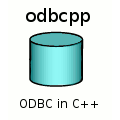
concept
What is a Golden File in software development?
Mon, 03/14/2022 - 11:34 — Alexis Wilke While programming, one of the best thing to do to make sure that your software works as expected is to write tests.
While programming, one of the best thing to do to make sure that your software works as expected is to write tests.
Actually, if you write enough tests to make sure that the code works as expected, it should take you between two and three more time to finish up your project. So if it takes you one day to write a function, it will take you another two days to write good tests for that one function.
Many of those tests, especially as you construct more and more complex software, require large amount of input and output data. It's easy enough to test a function such as strlen(). It has one ...
Don't Repeat Yourself When Writing Software
Fri, 05/01/2020 - 10:39 — Alexis Wilke
For a very long time now, we have been using languages that support having functions that one can call. That was not always the case, although even really old versions of BASIC had a GOSUB instruction, which it had no concept of local variables so it was rather difficult to use safely.
Functions allow you to avoid repetition. You write a small snippet of code (or maybe not that small) within a function and then you call that function to reuse that snippet over and over again. Good programmers tend to do that even with one liners. However, many others often think: well, it's just one line, why don't I return copy & paste that wherever I need it, it's going to be faster.
Drupal Aggregator
The default Aggregator Drupal module does not work very well. There are several problems with the Drupal Core module, one of which we have not fixed in our version (i.e. the flatness of the item table.)
There is a list of the known issues and our comments and whether we fixed the problem:
| Problem | Solution in m2osw's version of Aggregator |
|---|---|
| Missing XML marker | The <?xml ... ?> marker is missing from some RSS feeds, add it as required |
| Spurious data | Some RSS feeds add spurious data ... |
Discuss This! (The Module —)
The following documentation is about the Discuss This! module.
The concept of the Discuss This! module is simple:
Let users comment your pages but force them to do so in your Forum.
Call Function
Pops one string that represents the name of the function to call, pop one integer indicating the number of arguments following, pop each argument, call the named function, push the result of the function on the stack. There is always a result1.
- 1. When nothing is returned by the function, the result undefined is pushed on the stack.
DefineSprite
A sprite is a set of SWF tags defining an animated object which can then be used as a simple object. A sprite cannot contain another sprite. hHowever, you can use PlaceObject2 to place a sprite in another.
The following are the tags accepted in a Sprite:
DoAction
End
FrameLabel
PlaceObject
PlaceObject2
PlaceObject3
RemoveObject
RemoveObject2
ShowFrame
SoundStreamBlock
SoundStreamHead
SoundStreamHead2
StartSound
The data array of tags should always be terminated by an End tag though this can be inferred some players may not support a non-terminated list.
In order ...
GoldMoney.com
Wed, 12/02/2009 - 10:53 — Doug BarbieriWatching the spiraling price of gold (the spot price as of this writing is $1,213.40/oz) has been a humbling experience for me. There are all kinds of marketing forces happening to cause this, but if you follow what the Austrian School folks are saying, this is not a surprising trend at all. Central banks around the world are dumping their U.S. dollars and buying up gold, which is driving the price up. But I think this is different than just another commodity bubble, because the way gold is perceived--as a store of wealth. Traditionally investors who feel the currency they are in is threatened ...
FreeAll
This is an interesting concept: have a tag that can clear everything that we have done so far and start over. If you have a single time line, this is certainly useful. Since version 3, however, we get the DefineSprite tag that has a very similar capability (except that it does not have the ability to delete anything from memory, this comes in version 5 with access to external animations that can be created and thrown away dynamically.)
Notes about Copyrights
SSWF™ name
The name SSWF™ is used by Made to Order Software to reference its SWF library. You are welcome to use this name in reference the SSWF library if you use it in your own software.
SWF Format
Please, note that there is no restriction in using this document. However, the SWF format copyright holders are Macromedia and Adobe. There may be limits in what you can do using this format. If you are not sure, I suggest you contact a knowledgeable copyright and Software attorney who can help you decide what you can do with the SWF format.
odbcpp, a simple C++ library to access ODBC

The ODBC library is an interesting concept created by Microsoft in 1988. It is a library that wraps the implementation details of database managers inside drivers. And these drivers are accessible from the library.
One of the main problem with accessing any database system, is the large number of ...
